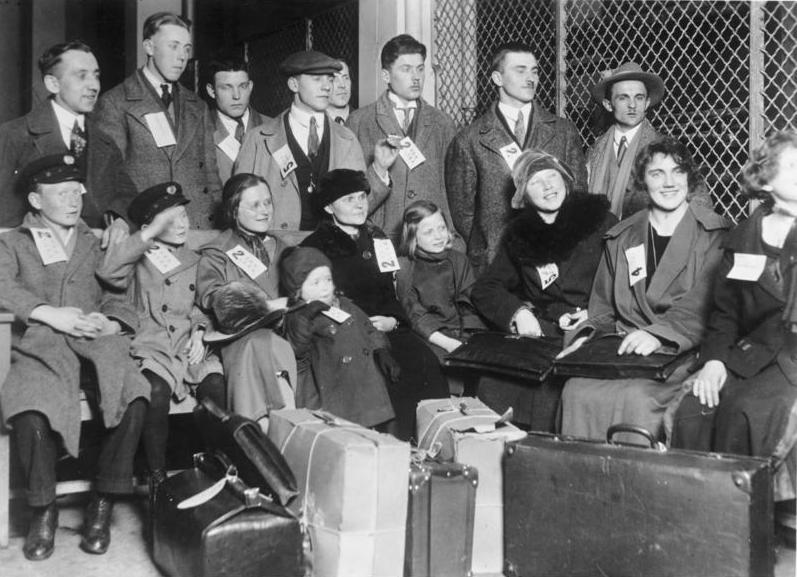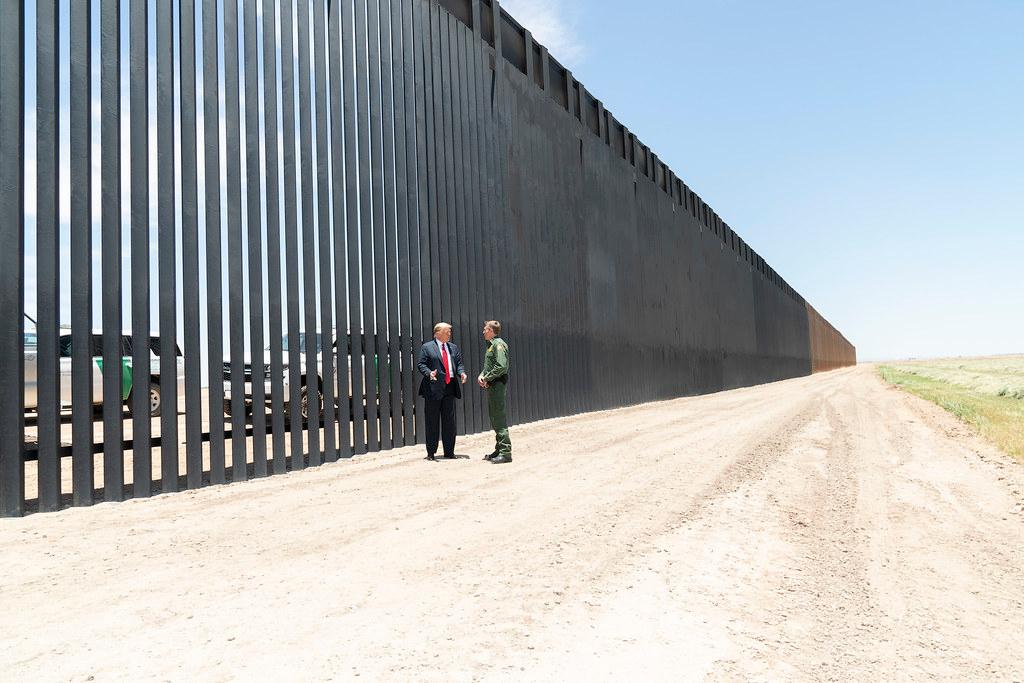Immigration to the United States

Immigration to the United States was influenced by both push and pull factors. The push factors were what drove the immigrants from their country such as religious persecution, political oppression and poverty. The pull factors were what attracted immigrants to America such as its civil rights, economic opportunities, religious freedom, free speech, and freedom of expression.
Freedom, opportunity, and civil rights became the basis of the American system of values and the American Dream. The American Dream is the idea that anyone would have the opportunity to succeed in America. However, opportunity to succeed was all that was promised. It was up to the individual to work hard and create their own success. If, on the other hand, they failed, there would be no safety net to catch them.
Immigration to the United States had a significantly negative impact on the Native Americans. The Europeans brought with them many diseases that the Native Americans had no immunity against and many died. The Native Americans were pushed aside and their land was stripped from them piece by piece. This led to wars, but the immigrants had superior technology and numbers.

Christopher Columbus discovered America in 1492. The voyage was financed by Spain. Spain dominated the early exploration and colonisation of 'the New World'. In the early 1600s, Britain defeated Spain in a war, and became the dominant power at sea. The first British colony in America was established soon thereafter. A number of colonies were established from 1607–1680. The colonies were under British rule, and they had limited autonomy.
The northern colonies
The first colonies were established on the East Coast. There was a great difference between the colonies in the North and in the South. In the northern colonies such as Plymouth, Massachusetts, Pennsylvania and Rhode Island, many colonists came for the religious freedom. They had small farms and were predominantly middle-class. Many were well-educated and started developing industries, such as lumber, linen and woollen mills, and shipbuilding. They also opened small shops, started trade, or became craftsmen. It was a society dominated by the middle class, in which religion played a central role in everyday life.
The southern colonies
In the South, large plantations were established due to the mild climate and fertile soil. The original intention of the first southern colonies was profit. The first settlers in Virginia, for example, were fortune seekers looking for gold and trade routes. When those ideas failed, they turned to farming. They had enough capital to buy large areas of land, which formed the basis of a plantation economy based on large crops of cotton, tobacco, and indigo.
The plantation system was based on slavery and indentured servitude. People were kidnapped from Africa and brought by ship to America to work for free. Slave markets and slave auctions became part of everyday life in the South. Since the slaves were brought to America against their will, they are not considered to be immigrants in the traditional sense.
In the South, there weren't many opportunities to develop a middle-class. The ideas of equality and opportunity were non-existent for the slaves and not as widespread in the South as they were in the North. The differences between the colonies in the North and those in the South eventually lead to civil war.

Immigration to the United States has always been steady, but there have been noticeable ebbs and flows. During times of uncertainty and war, there has been less immigration, while there has been more during times of progress and prosperity. When we say that there is a wave of immigration, we mean that it is a period in which many immigrants arrive.

The first wave of immigration
The first wave of immigration lasted from 1680 to around 1776 where Scots-Irish and Germans were the majority of immigrants. After the War of Independence(1775–1783), immigration was low, until around 1820.
The second wave of immigration
The second wave of immigration occurred 1820 to 1890. This was a period in which America went from being mainly a rural and agricultural society to a burgeoning industrial society. It was during this second wave, that many Irish and Norwegians emigrated. The Irish were highly dependent on the potato and when the potato crop failed in the 1840s many either emigrated or faced starvation. By percentage of population, no other country sent more people to America than Ireland.
Most of the Norwegians emigrated to the Midwest, drawn in by the promise of free land. The Homestead Act granted citizens or future citizens up to 160 acres of public land provided they live on it, improve it, and pay a small registration fee. A couple could claim 320 acres of land between them. This dwarfed any farm they had seen at home in Norway. They could write home to family and friends and brag about being large landowners. The Government granted more than 270 million acres of land while the law was in effect.
Immigration from China
In the 1800s, many immigrants came to the United States from China. They worked as labourers, particularly on transcontinental railroads such as the Central Pacific Railroad, or in mining. The Chinese immigrants were met with hostility, racism, and exclusion. Towards the end of the century, laws were created to limit immigration from China.
The third wave of immigration
By the time the third wave began, the United States had become a leading industrial nation. The third wave started around 1890 and lasted until around 1930. During the third wave, the United States received immigrants from new areas. People mostly came from Eastern and Southern European cities and moved into American cities to work in industry. The promised land began to seem less and less promising as immigrants were stuffed into tenement buildings in over-crowded cities and had to work in factories under deplorable conditions. The immigrants soon discovered that American streets were not paved with gold. Nevertheless, immigrants poured into the United States where they at least felt like they had a chance. This wave continued until the Great Depression began in 1929.
Fourth wave of immigration
A fourth wave of immigration began in 1965 and is still ongoing. This wave includes a mixture of Asian immigrants (Koreans, Vietnamese, Cambodians, Chinese and Japanese), and Hispanics (people from Latin America and South America).
The Asians, as a group, are successful. The success of this group may be explained by two factors. Firstly, many of them (particularly the Chinese and Koreans) arrive with money and invest it wisely. They often start businesses and work long hours. Secondly, members of this group are often well-educated, and value education for their children. Research shows that Asian children are more likely to go to a good school than other immigrant children.
As a group, there is a high rate of poverty among Hispanic immigrants. They are often poor when they arrive and have to make work a priority over education. In addition to this, a number of these immigrants come to the United States illegally, which makes them vulnerable to exploitation. They often work for less money and can't complain about the working conditions for fear of being deported. They are also not eligible for help from government programmes for as long as they remain undocumented. However, over time, as families become established, it can be observed that Hispanic immigrants begin to work their way into the middle class.
Today, immigrants make up 14% of the US population. This number is expected to rise to 18% by 2065. It is also projected that Asians will become the largest immigrant group.
Immigration has been a hot-button issue in America for a long time, and that is unlikely to change. Since the late 1800s, a number of laws have been introduced to limit immigration, or to ensure that only certain groups of immigrants are allowed. Those favouring such restrictions warn against overpopulation, unemployment, poorer social conditions and a dilution of the national identity. However, those with a more inclusive attitude welcome the cultural riches that ethnicity represents, and point out the many ways that diversity has already enriched the USA.
In recent years, strict measures have been put in place to stop illegal immigration. Immigrants who cross the border illegally, are detained and deported. Sometimes this means that parents and children are separated. President Donald Trump made the building of a border wall between Mexico and the United States one of his most important campaign promises when he ran for office in 2016. President Biden stopped work on the wall when he took office in 2021, reallocating the money to cleaning up after the construction had ended, and for improving infrastructure. Nevertheless, the days when America welcomed all who were healthy and willing to work hard are in the past.

Guoskevaš sisdoallu
Tasks for the article about immigration to the USA